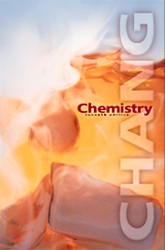 |  Chemistry, 7/e Raymond Chang,
Williams College
Chemical Bonding I: Basic Concepts
Internet Exercises
()
- Another resource provided by WebElements is a VSEPR tutorial. Examine the
example molecules given at http://www.shef.ac.uk/~chem/vsepr.
Study the image of BF3.
- Which is the central atom?
- How many bonds surround this atom?
- Draw a lewis structure.
- Are there any lone pairs on the central atom?
- Calculate the formal charge on the boron atom.
- Calculate the formal charges on the fluorine atoms.
- Does this molecule obey the octet rule?
Now, study the methane molecule. - Is a C-H bond polar?
- Is methane a polar molecule? If not, why?
Finally, take a look at ammonia. - Draw the lewis structure for ammonia.
- Calculate the formal charge on the nitrogen.
- Does ammonia have a dipole moment? What makes this molecule different
from methane?
|
 |  |  |
()
- Chemistry Central provides assistance on basic atomic information, periodic
elements, and chemical bonding. After reading the material provided on the
page http://library.advanced.org/3659/structures/,
answer the questions below.
- Why are metals associated with good electrical conductivity?
- Why do metals generally lose electrons and nonmetals usually gain electrons?
- What makes a bond ionic rather than covalent? How do you differentiate
between them?
|
|



 2002 McGraw-Hill Higher Education
2002 McGraw-Hill Higher Education